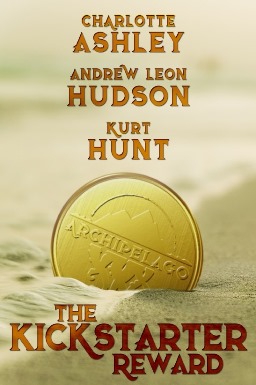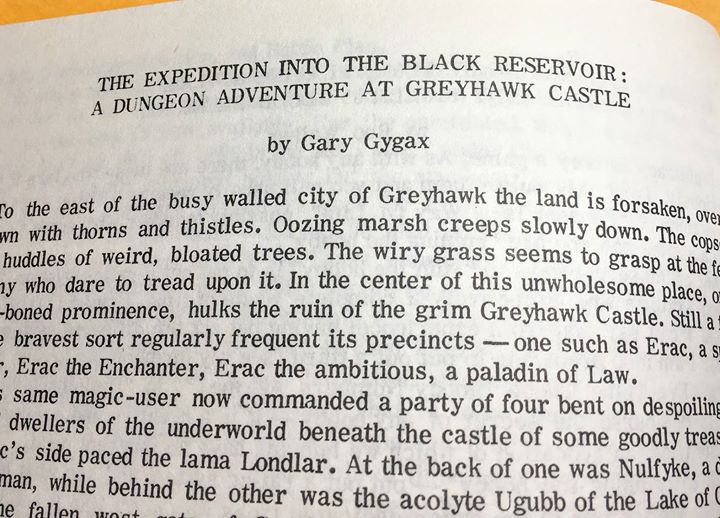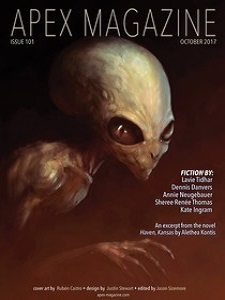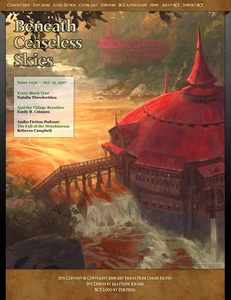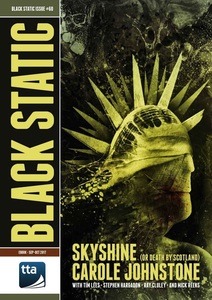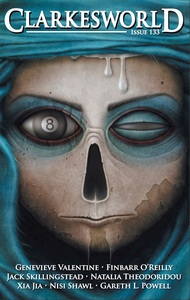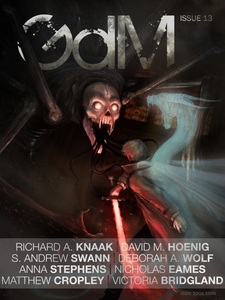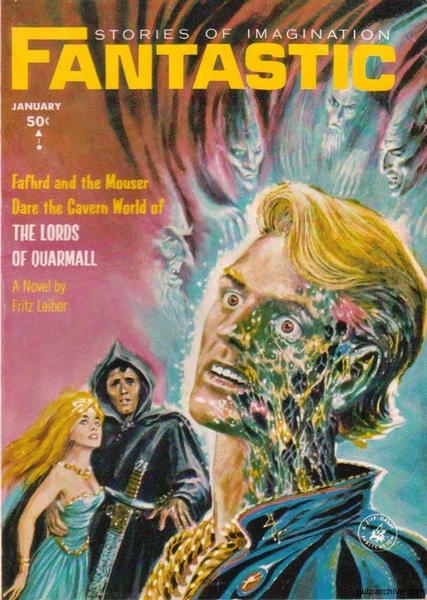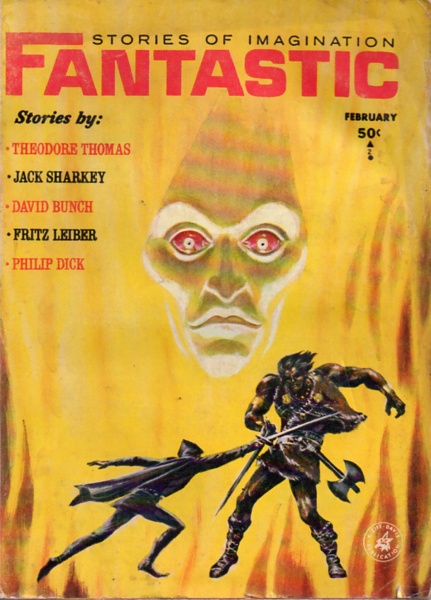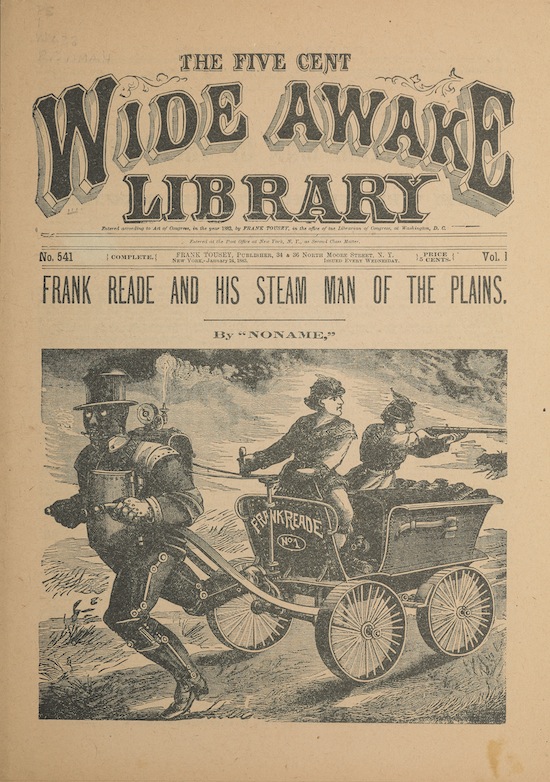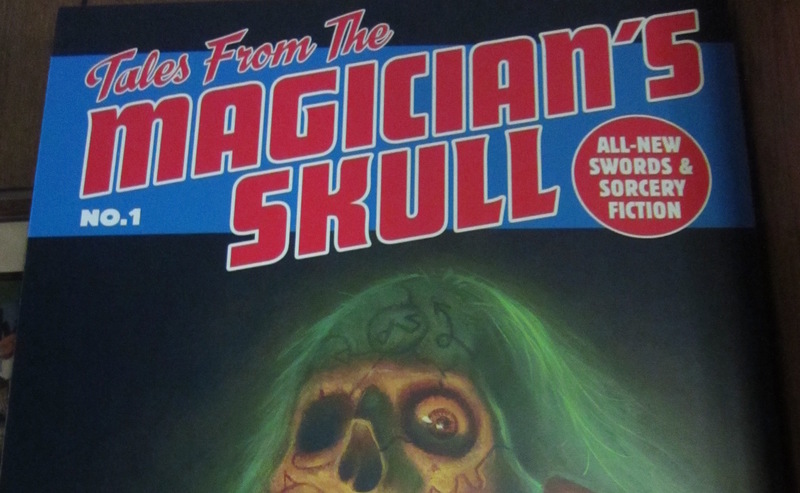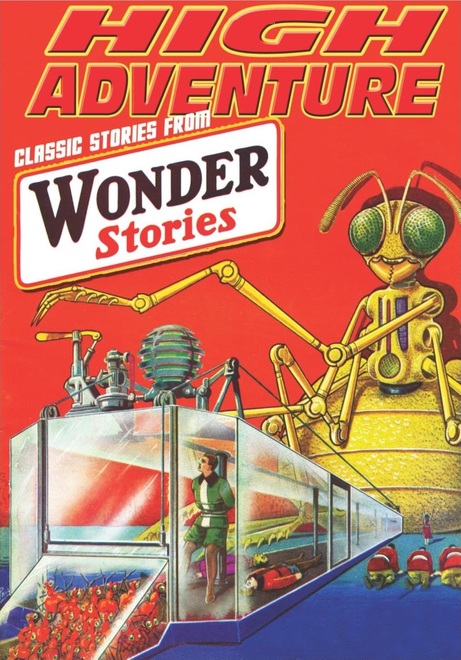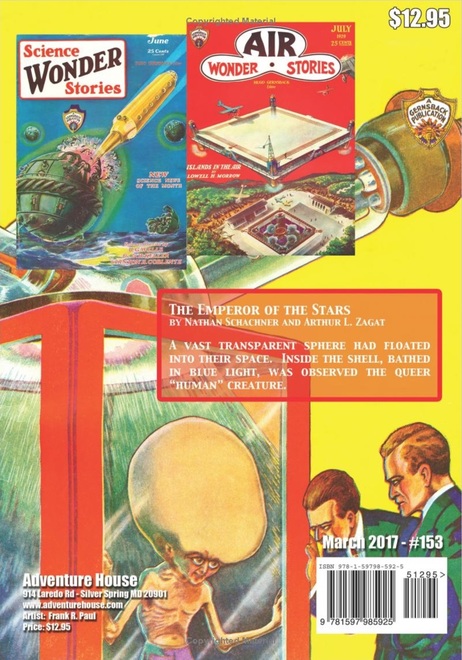October Short Story Roundup
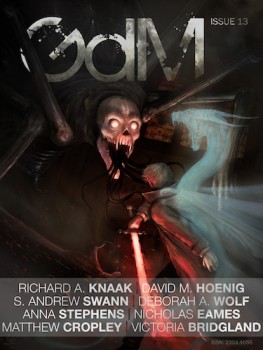 Things were a little thin on the ground for swords & sorcery this past month. Only Grimdark Magazine crossed my radar this month with new tales of adventure, and three out of three in the latter publication weren’t S&S.
Things were a little thin on the ground for swords & sorcery this past month. Only Grimdark Magazine crossed my radar this month with new tales of adventure, and three out of three in the latter publication weren’t S&S.
Grimdark Magazine #13 is packed with three stories and the usual spate of interviews, reviews, and commentaries on the subject of grimdark. If anyone will ever convince me that grimdark is a real, definable sub-genre and not just a marketing ploy, it will be the magazine’s editor, Adrian Collins. His choice of stories and non-fiction is solid and consistently presents grimdark as something far more than just gory rape and murder. In his magazine, there’s room for much subtlety and nuance.
The non-fiction is the usual magazine mix of good and poor. Though I disagreed with much of what he said, I enjoyed the interview with Nicholas Eames, author of Kings of the Wyld. Deborah A. Wolf has a fun article titled “How to Land a Rockstar Agent in Ten Excruciating Steps.”
Normally, I don’t write much about magazine’s non-fiction, but article in particular needs to be pointed out. In “Barbarians or Philosophers?,” Matthew Cropley and Victoria Bridgland make an argument that grimdark readers are a more discerning group than those who prefer more traditional fantasy. It’s more complex than that, drawing on things said by authors, as well as psychological studies, but that’s its general conclusion.
In the debate between those who love grimdark, and those who hate it, there is, I’ll concede, some evidence for either side. For those who claim that grimdark fans read because they enjoy the thrill that comes with depictions of violence, there’s some research, as noted above, to back this up. However, there seems to be much more recent evidence that supports grimdark fans gaining a deep fulfillment and enhanced personal well-being by engaging with grimdark fantasy. The dark and violent aspects of grimdark help it reflect the human condition in all its complex glory, whereas heroic fantasy is limited to an idealized portrayal of good and evil. Lack of material rewards and the unfairness and violence of grimdark worlds mirror our own, and help us see that the true rewards in life are increased wisdom and understanding of the nature of reality. Grimdark fans like the sub-genre because its anti-heroes share their high regard for justice and righteous vengeance, and that disposition means that the violence common to grimdark doesn’t detract from deep engagement with exploration of humanity, in all its glorious shades of grey.
I could spend an entire post unpacking the various claims made in that statement, but I’ll skip it that today. Suffice it to say, I disagree with most of what they say. Much of what passes for “increased wisdom and understanding of the nature of reality” is no more than easy cynicism and affected world-weariness. The only time I find humanity reduced to “shades of grey” is when I deliberately choose to filter out all the other colors of the spectrum.
